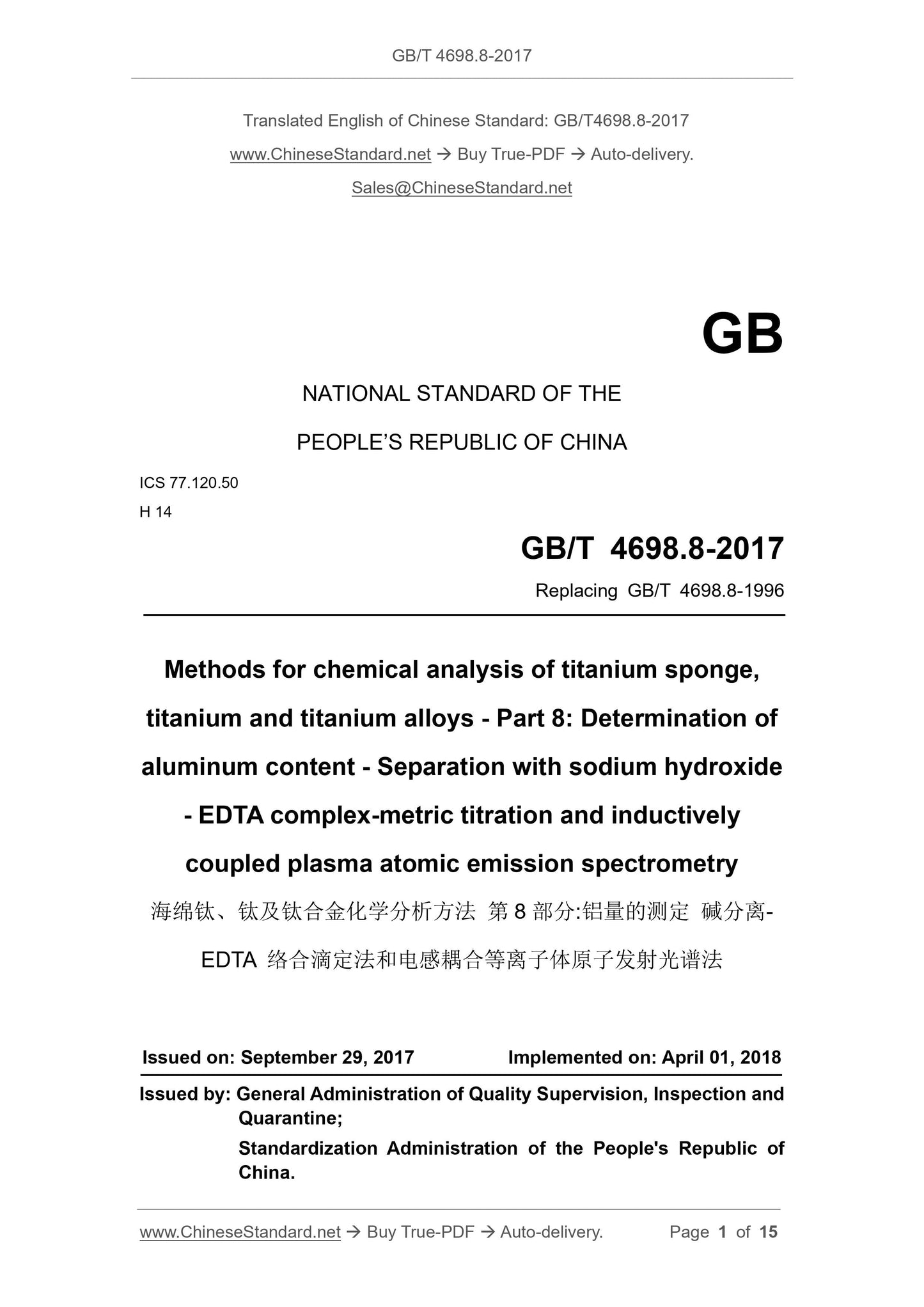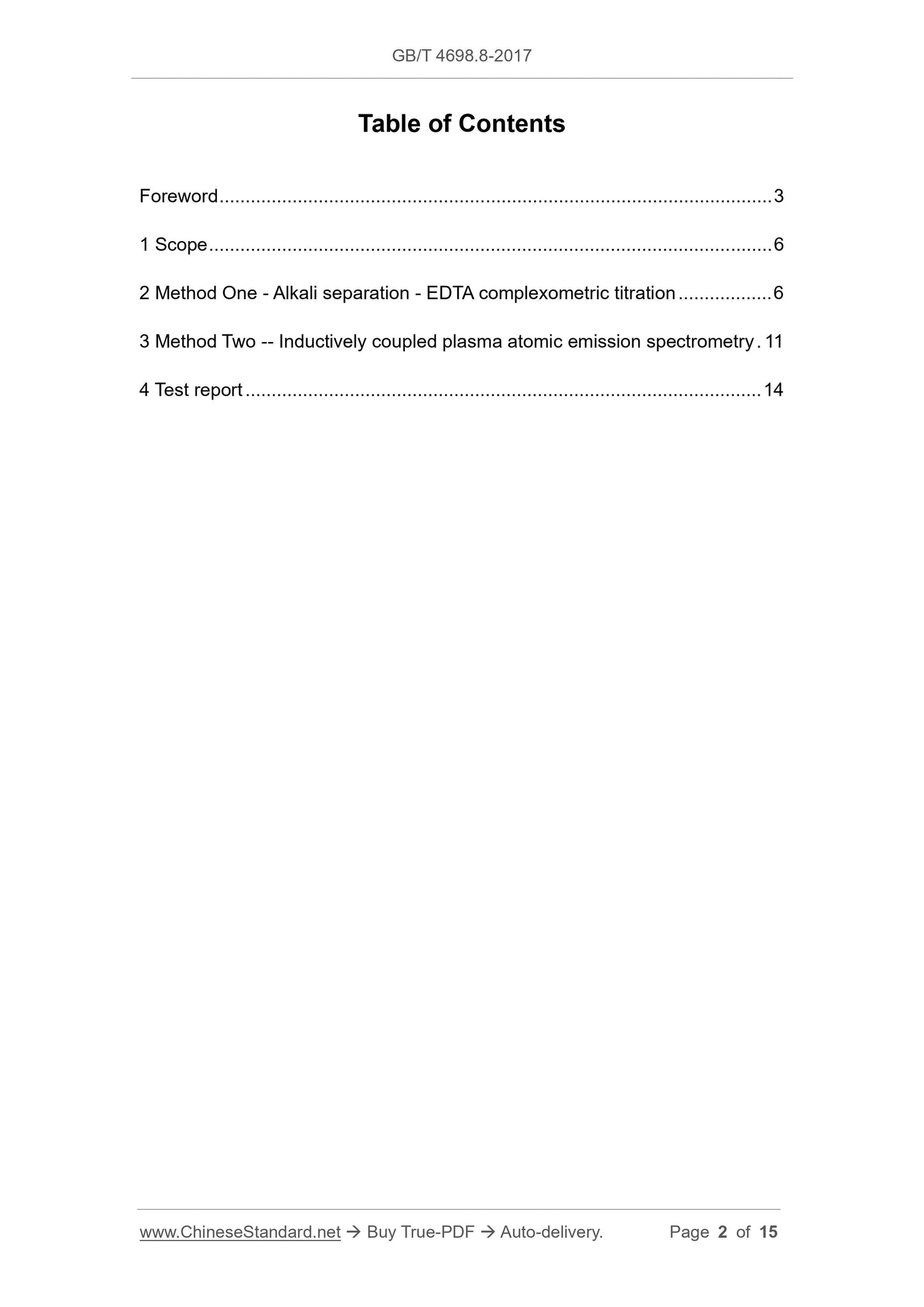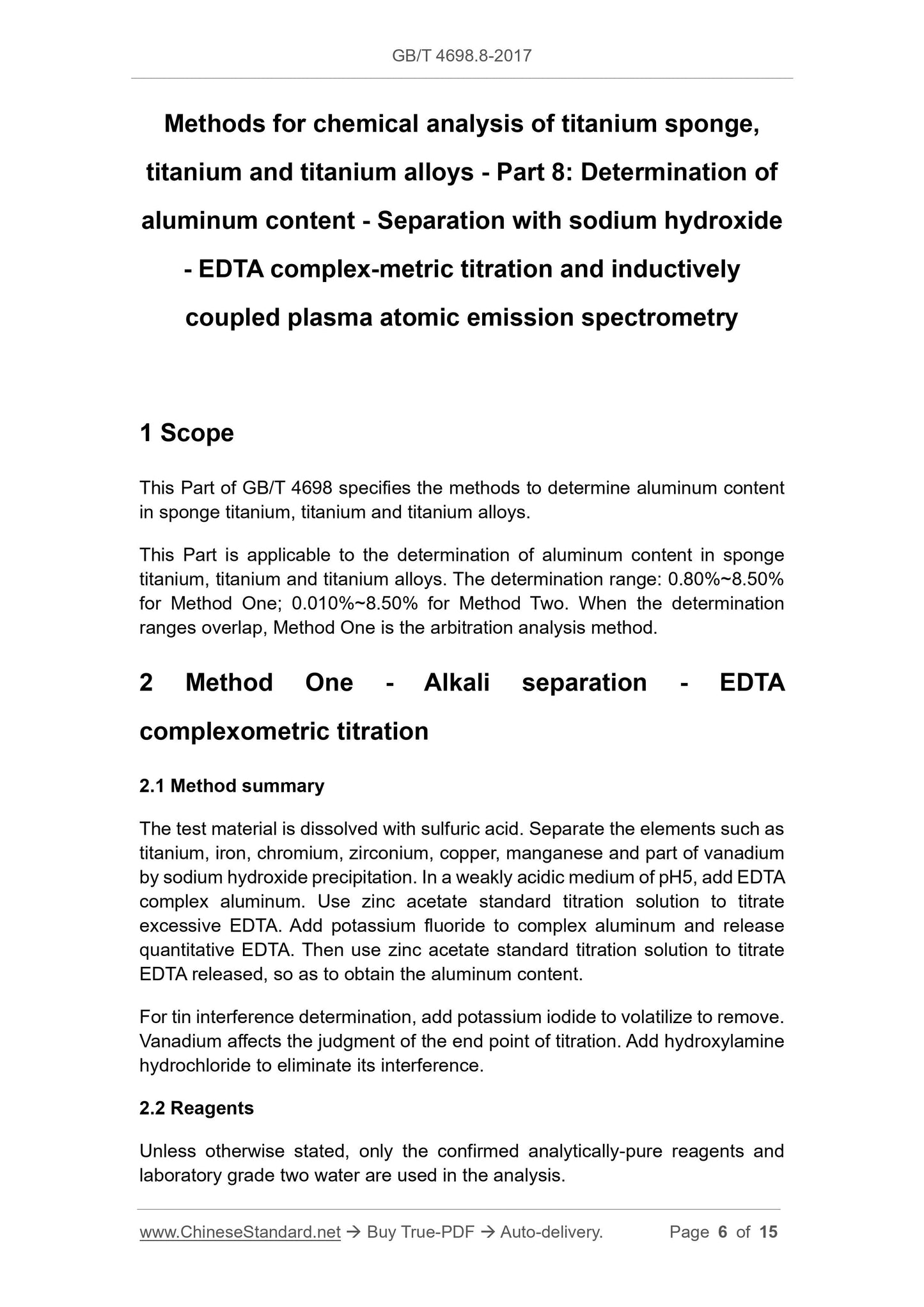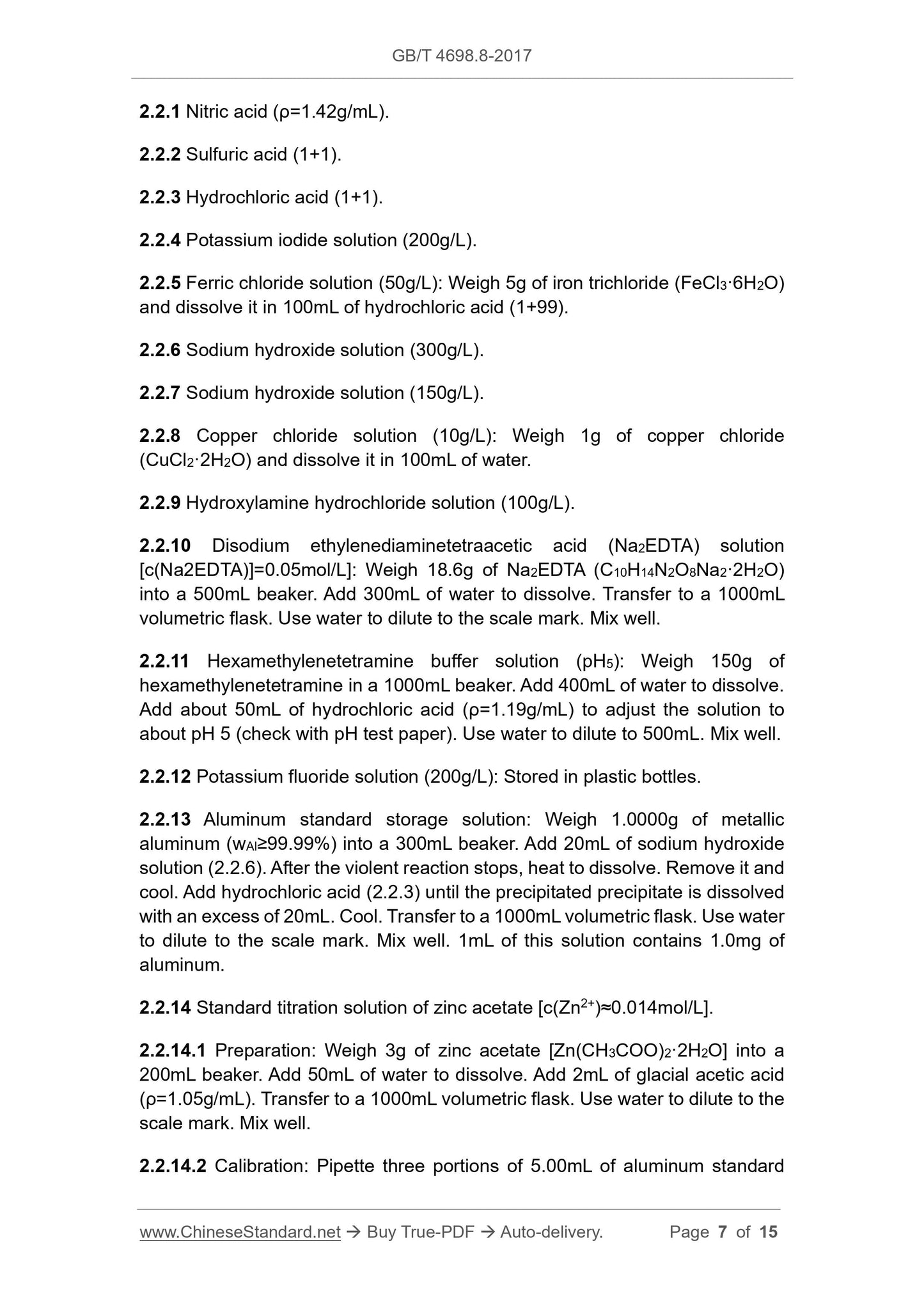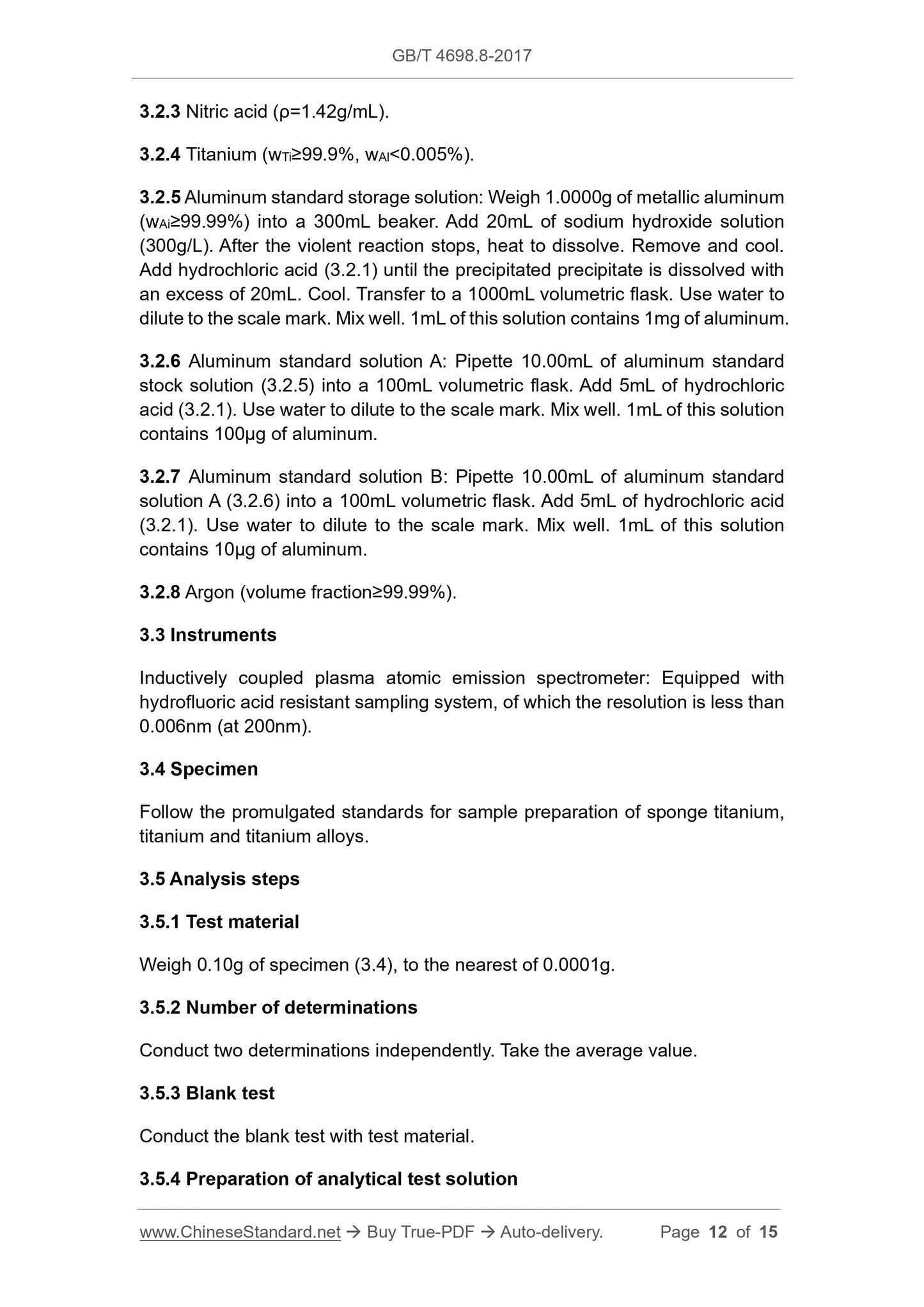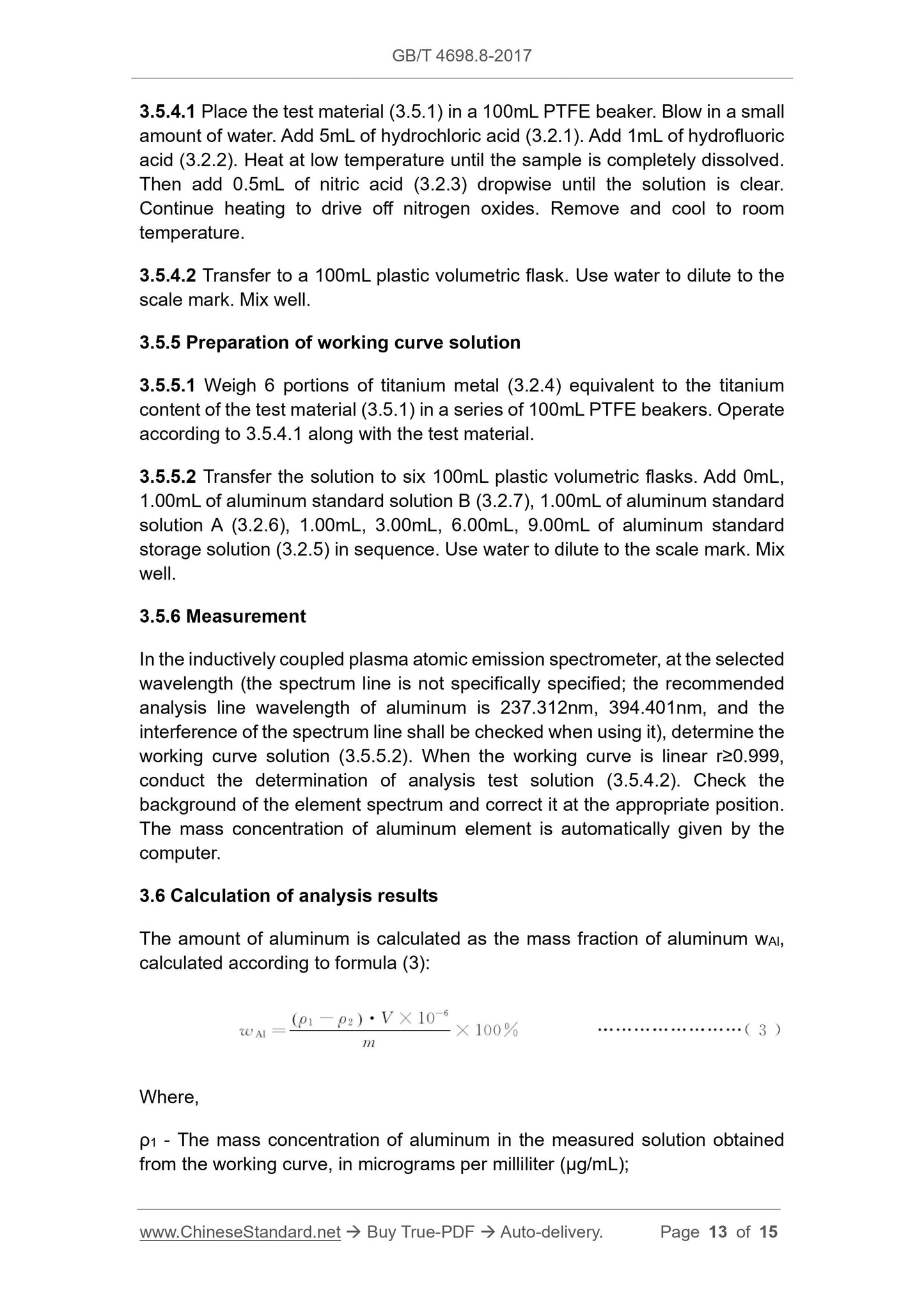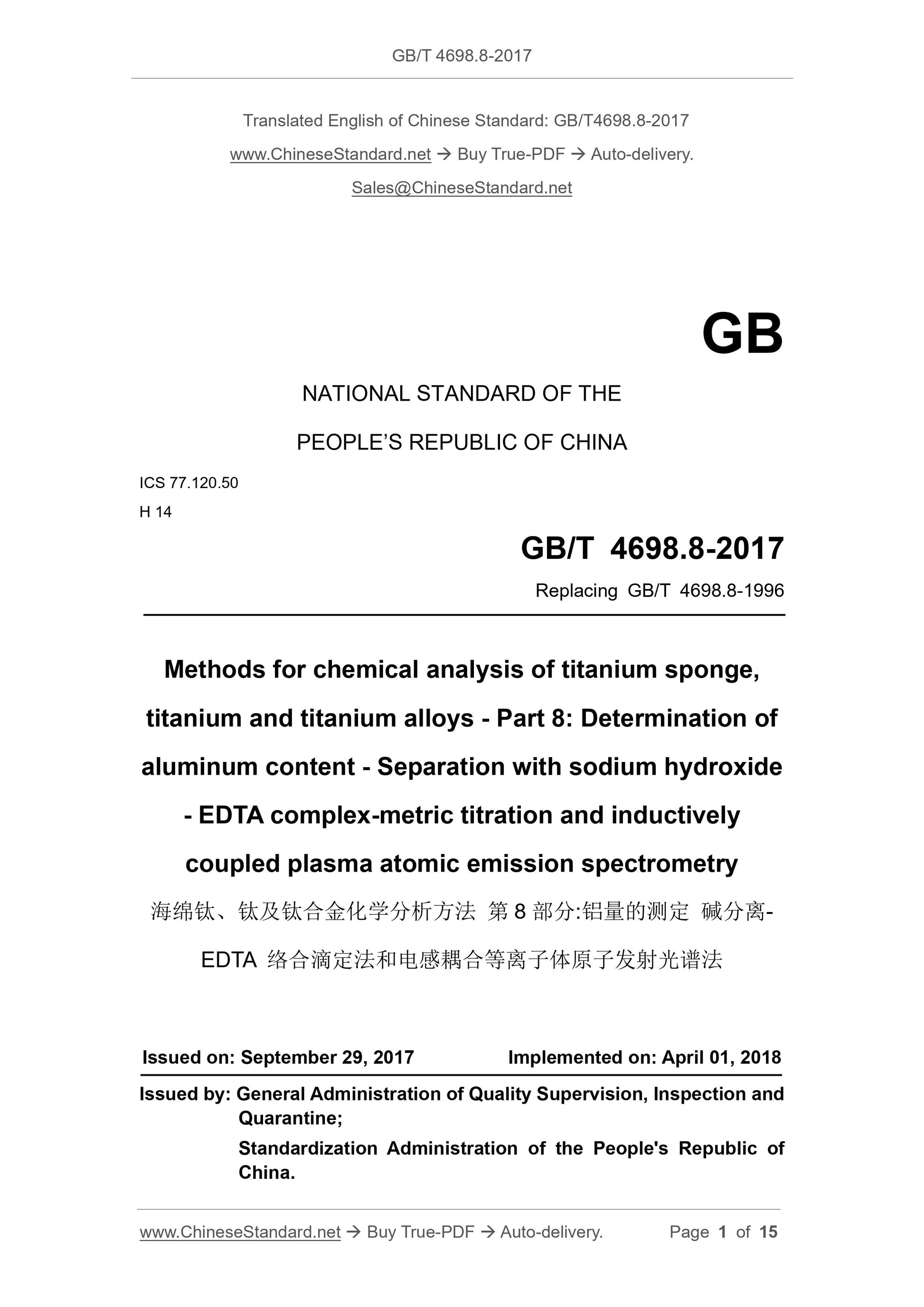1
/
of
6
www.ChineseStandard.us -- Field Test Asia Pte. Ltd.
GB/T 4698.8-2017 English PDF (GB/T4698.8-2017)
GB/T 4698.8-2017 English PDF (GB/T4698.8-2017)
Regular price
$170.00
Regular price
Sale price
$170.00
Unit price
/
per
Shipping calculated at checkout.
Couldn't load pickup availability
GB/T 4698.8-2017: Methods for chemical analysis of titanium sponge, titanium and titanium alloys - Part 8: Determination of aluminum content - Separation with sodium hydroxide-EDTA complex-metric titration and inductively coupled plasma atomic emission spectrometry
Delivery: 9 seconds. Download (and Email) true-PDF + Invoice.Get Quotation: Click GB/T 4698.8-2017 (Self-service in 1-minute)
Newer / historical versions: GB/T 4698.8-2017
Preview True-PDF
Scope
This Part of GB/T 4698 specifies the methods to determine aluminum contentin sponge titanium, titanium and titanium alloys.
This Part is applicable to the determination of aluminum content in sponge
titanium, titanium and titanium alloys. The determination range: 0.80%~8.50%
for Method One; 0.010%~8.50% for Method Two. When the determination
ranges overlap, Method One is the arbitration analysis method.
Basic Data
| Standard ID | GB/T 4698.8-2017 (GB/T4698.8-2017) |
| Description (Translated English) | Methods for chemical analysis of titanium sponge, titanium and titanium alloys - Part 8: Determination of aluminum content - Separation with sodium hydroxide-EDTA complex-metric titration and inductively coupled plasma atomic emission spectrometry |
| Sector / Industry | National Standard (Recommended) |
| Classification of Chinese Standard | H14 |
| Classification of International Standard | 77.120.50 |
| Word Count Estimation | 10,165 |
| Date of Issue | 2017-09-29 |
| Date of Implementation | 2018-04-01 |
| Issuing agency(ies) | General Administration of Quality Supervision, Inspection and Quarantine of the People's Republic of China, Standardization Administration of the People's Republic of China |
Share
